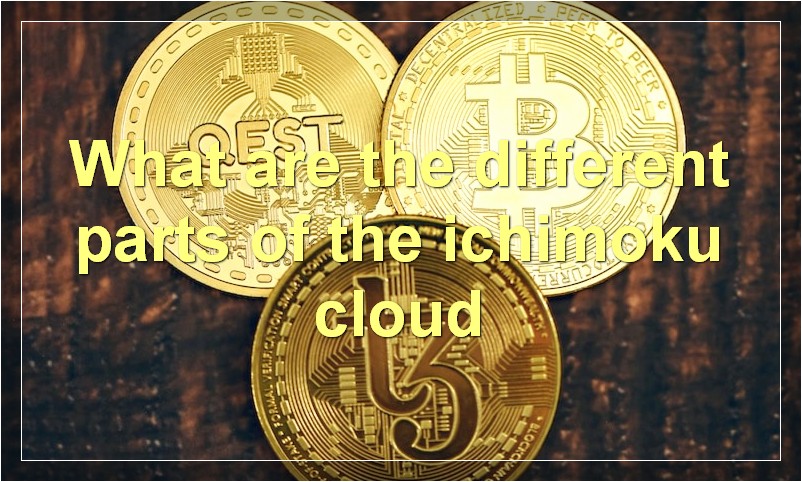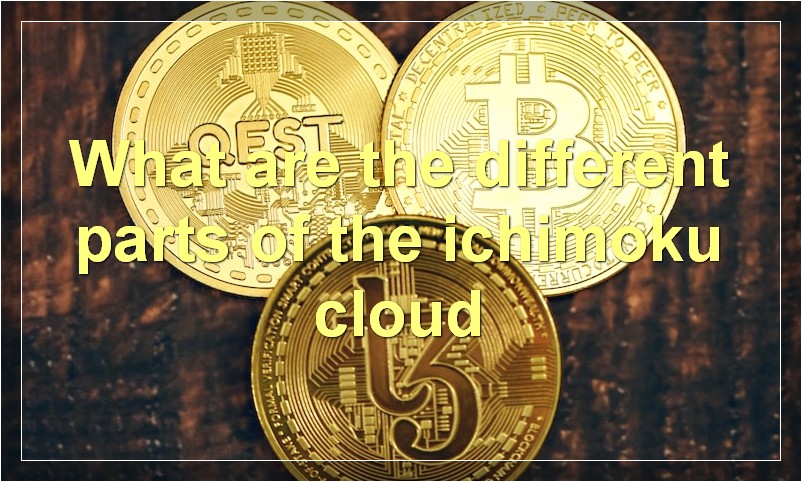If you’re looking to get started with Ichimoku Cloud trading, this complete guide will show you everything you need to know.
What is the ichimoku cloud
The Ichimoku Cloud, also known as Ichimoku Kinko Hyo, is a technical analysis indicator that is used to gauge future price momentum and determine support and resistance levels. The cloud is composed of two lines, the Tenkan-sen and the Kijun-sen, which are lagging indicators that are used to identify trend direction and potential reversal points. The cloud also includes the Senkou Span A and B lines, which are leading indicators that are used to forecast future prices.
The Ichimoku Cloud is a versatile indicator that can be used in any market and on any time frame. It is especially useful in identifying trends in the forex market, as it can be difficult to identify trend direction using other indicators. The cloud can also be used to trade other markets, such as stocks, futures, and commodities.
The Ichimoku Cloud is a powerful tool for traders who are looking to get an edge in the market. If you are interested in learning more about this indicator, please check out our Ichimoku Cloud Trading Strategy guide.
What are the different parts of the ichimoku cloud

The Ichimoku Cloud, also known as the Ichimoku Kinkō Hyō, is a technical analysis indicator used to identify trends and momentum, and to set support and resistance levels. It was developed by Japanese journalist Goichi Hosoda in the 1960s, and is now used by traders around the world.
The Ichimoku Cloud is composed of five different parts:
1. The Tenkan-sen: This is the faster moving average of the price, and is used to identify the short-term trend.
2. The Kijun-sen: This is the slower moving average of the price, and is used to identify the long-term trend.
3. The Senkou Span A: This is the leading edge of the cloud, and is calculated by adding the Tenkan-sen and the Kijun-sen together and then dividing by two. This value is plotted 26 time periods ahead, so it acts as a leading indicator of future prices.
4. The Senkou Span B: This is the lagging edge of the cloud, and is calculated by taking the highest high and the lowest low over the past 52 time periods, and then dividing by two. This value is plotted 26 time periods ahead, so it acts as a lagging indicator of future prices.
5. The Chikou Span: This is the most recent closing price, plotted 26 time periods behind. This helps to confirm trends and momentum.
What do the different parts of the ichimoku cloud represent
The Ichimoku Cloud is a technical indicator that is used to measure momentum and provide trade signals. The indicator is composed of five lines, which represent different aspects of the market. These five lines are the Tenkan-sen, the Kijun-sen, the Senkou Span A, the Senkou Span B, and the Chikou Span.
The Tenkan-sen is the fastest line and is used to measure short-term momentum. The Kijun-sen is a slower line and is used to measure medium-term momentum. The Senkou Span A is the first cloud boundary and represents the average of the Tenkan-sen and the Kijun-sen. The Senkou Span B is the second cloud boundary and represents the average of the 52-period high and low. The Chikou Span is a lagging line that is used to measure past momentum.
The Ichimoku Cloud can be used to generate buy and sell signals. A buy signal is generated when the fast line crosses above the slow line and both lines are above the cloud. A sell signal is generated when the fast line crosses below the slow line and both lines are below the cloud.
How can the ichimoku cloud be used to identify trends
How can the ichimoku cloud be used to trade
The Ichimoku Cloud is a technical indicator that can be used to identify potential support and resistance levels, as well as trend direction and momentum. The indicator is composed of several moving averages and other calculations, which are then plotted as lines on a price chart.
The most important element of the Ichimoku Cloud is the kumo, or cloud. This is formed by two lines: the senkou span A and the senkou span B. These lines are created by averaging the highest high and lowest low over the past 52 periods, 26 periods in the case of senkou span A, and 28 periods in the case of senkou span B. The resulting line is then shifted forward by 26 periods (senkou span A) or 28 periods (senkou span B).
The area between the senkou span A and senkou span B lines is shaded in, forming the cloud. The cloud acts as support or resistance, depending on which side of the cloud price is trading. If price is above the cloud, it is considered to be in an uptrend. If price is below the cloud, it is considered to be in a downtrend.
The Ichimoku Cloud can also be used to identify potential entry and exit points. The leading span1 (chikou span) line is plotted 26 periods behind price, making it a good tool for identifying turning points in the market. In an uptrend, prices will often pull back to the cloud support before resuming their advance. This pullback can be used as a buying opportunity. In a downtrend, prices will often bounce off resistance at the top of the cloud before falling back down. This bounce can be used as a selling opportunity.
Another useful element of the Ichimoku Cloud is the tenkan-sen and kijun-sen lines. The tenkan-sen line is created by averaging the highest high and lowest low over the past 9 periods. The kijun-sen line is created by averaging the highest high and lowest low over the past 26 periods. These two lines can be used to identify trend direction and momentum. In an uptrend, prices will often stay above the kijun-sen line. In a downtrend, prices will often stay below the kijun-sen line.
The Ichimoku Cloud is a versatile technical indicator that can be used in a number of different ways. It can be used to identify potential support and resistance levels, as well as trend direction and momentum. It can also be used to generate potential buy and sell signals.
What are some common ichimoku cloud strategies

The ichimoku cloud is a popular technical indicator that can be used to identify a variety of different trading opportunities. There are a number of different ichimoku cloud strategies that traders can use, and in this article, we will take a look at some of the most common ones.
One of the most popular ichimoku cloud strategies is known as the Kumo Breakout. This strategy is based on the premise that when price breaks out above or below the ichimoku cloud, it is indicative of a change in trend. As such, traders will often look to enter into a trade in the direction of the breakout.
Another popular ichimoku cloud strategy is known as the Tenkan-Sen/Kijun-Sen Cross. This strategy is based on the cross of two key moving averages, known as the Tenkan-Sen and Kijun-Sen. These moving averages are used to identify changes in momentum, and as such, when they cross, it can be indicative of a potential trading opportunity.
Finally, another popular ichimoku cloud strategy is known as the Cloud Twist. This strategy is based on the premise that when price action twists around the ichimoku cloud, it is indicative of a change in trend. As such, traders will often look to enter into a trade in the direction of the twist.
These are just a few of the most common ichimoku cloud strategies that traders use. While there are many other strategies out there, these three are some of the most popular and well-known. If you are looking to get started with trading using the ichimoku cloud, then these are three strategies that you may want to consider.
What are some common mistakes made when using the ichimoku cloud
When it comes to using the ichimoku cloud, there are a few common mistakes that are often made. First and foremost, many people tend to use the cloud as a standalone indicator, without considering other important factors such as price action and trend. This can lead to some false signals, and ultimately result in losses.
Another common mistake is not paying enough attention to the various components of the ichimoku cloud. The cloud is made up of several different elements, each of which can give you valuable information about the market. As such, you need to be aware of all of these elements in order to make the most informed decisions possible.
Finally, another mistake that is often made is using the ichimoku cloud in a way that is too complicated. Remember that the goal is to simplify your analysis, not make it more complicated. If you find yourself getting lost in all the different lines and indicators, take a step back and re-evaluate your approach. Sometimes, the simplest solution is the best one.
By avoiding these common mistakes, you will be well on your way to becoming a successful ichimoku cloud trader. Just remember to keep things simple and always consider all of the available information before making any decisions.
How can I avoid making mistakes when using the ichimoku cloud
When using the ichimoku cloud, it is important to keep in mind a few key things in order to avoid making mistakes. First, one should make sure that they are using the correct time frame for their purposes. The ichimoku cloud is based on candlesticks, so using a different time frame will give you different results. Second, it is important to use the right settings for the ichimoku cloud. There are many different settings that can be used, and each one will give you different results. Third, it is important to understand how the ichimoku cloud works before using it. This way, you will be able to better interpret the results that you get.
What are some advanced ichimoku cloud strategies
There are many advanced ichimoku cloud strategies that traders can use to find profitable trading opportunities. Some of these strategies include using the cloud to identify trend reversals, spotting support and resistance levels, and finding breakout opportunities. By understanding and utilising these strategies, traders can greatly improve their chances of success in the markets.
Can the ichimoku cloud be used in conjunction with other technical indicators
The Ichimoku Cloud is a technical indicator that can be used in conjunction with other technical indicators to help identify trends and momentum. The Ichimoku Cloud is composed of five different lines, which are used to identify different aspects of the market. These five lines are the Tenkan-sen, the Kijun-sen, the Senkou Span A, the Senkou Span B, and the Chikou Span. Each of these lines represents a different time frame, with the Tenkan-sen representing the short-term, the Kijun-sen representing the medium-term, and the Senkou Span A and B representing the long-term. The Chikou Span is used to confirm trends.

